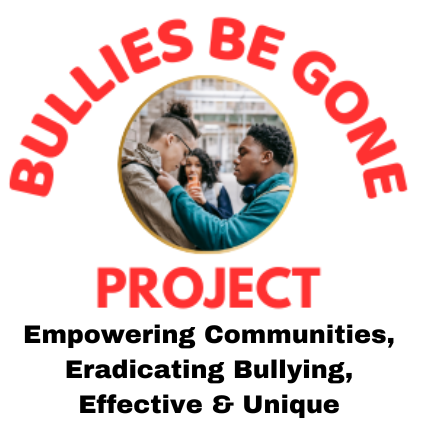Module 5
“THE INITIAL EMOTIONAL IMPACT OF BULLYING”
Weeks 9 – 10
The Initial Emotional Impact on Students When They Are Bullied
In my 35 years of effectively teaching anti-bullying, safety, awareness, and self-confidence skills and techniques to thousands of students and adults the following 4 responses have been predominant to the following question:
“How did you feel when you were first confronted by the bully?” Have students critically discuss the 4 responses below.
- I Did Not Know What to Say! – Have students respond on page 34 of their workbook and then discuss why they think someone would not know what to say in a bullying encounter. Ask if they have personally experienced the same feeling with a bully or know of someone who has.
- I Did Not Know What to Do! – Have students write in their workbooks and discuss why they think someone would not know what to do in a bullying encounter, and if they have personally ever experienced this with a bully or know of someone who has.
- I Was Scared and Confused! – Ask students to write in their workbooks and discuss why someone would have the reaction of fear in a bullying encounter. Ask if they have personally ever experienced this with a bully or know of someone who has.
- I Felt Lousy and Weak! – Ask students what some reasons are that would explain why someone could feel these emotions in a bullying encounter, and if it has ever happened to them (or if they know of someone who has experienced this). Their responses should also be written in their workbook.
Unfortunately, much of the time when bullying occurs, there is no adult around to immediately prevent or stop the bullying, especially at school. The adult comes after the initial bullying has taken place. (“After the fact!”)
The following illustration and poem “No Adult Around” outline the initial emotional impact that could take place with a student being bullied, when there is “No Adult Around.” Explain what is meant by the word initial.

Students will write in their workbook their answer to the following question: What is the theme/main idea of this illustration and what could be a hidden message(s) as it applies to bullying?
“NO ADULT AROUND” – Poem
There is no adult around when you bully me.
The adult comes after the bullying is over, your stupid bullying they never see.
Too many times the adult that was not around when you were bullying me,
When told about it, doesn’t even take your bullying seriously.
Too many adults think that some bullying is a natural thing for kids growing up.
There’s nothing natural about being called nasty names that hurt deeply and being pushed and shoved.
Why is there no adult around when the bullying happens, especially at school?
Having another kid bully you is never too cool.
Adults need to pay closer attention to bullying possibilities that are sometimes in plain view.
Sometimes adults that are supposed to be smart and protect kids, when it comes to bullying, don’t have a clue.
Adults should be more aware of what’s going on with kids in the hallways, restrooms, on the internet, and on the school grounds.
Because it is never a good thing when a kid is bullied, and there is no adult around.
Al Johnson
Remind students: Select your favorite words or phrases in the poem. Copy them onto your “My Favorites” at the end of your workbook! Practice repeating them over and over again, so you are ready to confidently respond to a bully.
“NO ADULT AROUND” VOCABULARY LESSON: Discuss with students the meanings of the following words/phrases, and how they are used in the stanzas of the poem.
- Natural thing
- Bullying possibilities
- Don’t have a clue
- No adult around
Have students write in their workbook the main idea of the poem “No Adult Around”.
1. Discuss the theme/main idea of the poem and how it applies to Eliminating and Preventing bullying.
2. Have students express in their Student Workbooks the meanings of each stanza in the poem. The stanzas in the poem are numbered in the student workbook with lines provided for their responses. (Pages 35-36)
3. Have students volunteer to read the meanings of the stanzas in the poem.
4. Instruct students to write a letter to adults, telling them what they think adults should know, and do about bullying.
REMINDER: Modules 1-16 are followed by a short quiz (in the student workbooks) so students can demonstrate mastery of the lesson. This is followed by a teacher evaluation, taking into consideration various aspects of what the students have learned from that module. Please make special note of any particular accomplishments, improvements made, or areas in need of improvement, FOLLOWED BY YOUR SIGNATURE AND DATE.


